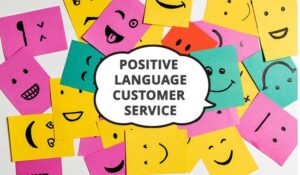Chat for customer support was starting to trend before the pandemic. But as it wore on, customers took an even bigger interest, and live chat tickets surged by 50%.
Today, according to Zendesk, support teams that have the fastest resolution times and highest CSAT ratings are 42 percent more likely to be messaging with their customers.
The Benefits Of Analyzing Your Customer Conversations
Chat software is a useful tool for businesses that want to communicate with their users and help them with their issues each day.
Your team can use it to answer questions and solve issues more quickly than by phone call, and it’s a valuable tool for engaging customers to increase loyalty and grow the business. It’s also used as lead generation software, growing sales through real-time conversions.
All these customer conversations are a rich data set full of insights into what customers have been getting in touch about.
From issues they’ve been having with your business’ products to bug reports, as well as requests for new features and customer feedback (both positive and negative), you have a wealth of useful information at your fingertips.
However, there’s one issue with this data: it’s hard to draw any meaningful conclusions from it all unless you methodically analyze it regularly. Diving into your chat analytics frequently will allow you to spot issues more quickly, identify trends, and use the data to make decisions to improve your business.
In this post, we’re going to dig a little deeper into some of the reasons you should be analyzing your chat support customer conversations. And then once you’re ready to dig into all that data, how do you go about it? Customer AI is a great way to extract insight from your chat conversations.
1. Understand Churn And Improve Retention
Previously, businesses were focused on getting new customers, and getting them to purchase a product. Acquiring new customers who would convert was the goal.
In recent years, though, the business world has seen a shift to subscription-based models. Rather than getting a customer once, who buys one thing and moves on, you can have regular customers who convert month after month if you shift to a subscription model. The idea of customer loyalty has become far more important.
This doesn’t apply only to businesses with a subscription model. Businesses of all kinds and in all verticals should be focused on trying to retain existing customers — and not just because it’s far cheaper to retain customers than to acquire new ones.
But retention is nearly impossible without understanding what your customers want and need from your product. How can businesses learn more about who their customers are and what they’re looking for?
Every support conversation in chat contains nuggets of information that could indicate reasons for customer churn, including:
- Missing features or functionality
- Poor support or customer service
- Product performance issues, such as a slow or buggy product
- Preference for competitor products
- Dissatisfaction with pricing or business model
By analyzing customer conversations and reviewing your tagging can you understand the potential reasons for customer churn.
Once you understand why customers are leaving, you’ll be better able to prioritize those issues and address them at the root level.
2. Generate Content Ideas
If you’re a marketer or customer success manager, you’ll know the importance of creating valuable content for your customers – but sometimes it can be difficult to come up with ideas for a new blog post or help desk article.
By delving into your chat analytics and thinking about the types of questions your customers are asking, you can easily come up with ideas for useful content that will directly answer those questions.
If you notice that many users seem to have misconceptions about your service or product, it offers you the perfect opportunity to write a piece explaining what your product does and how it can give your customers value.
You might have noticed a trend in customers asking questions about how your product works. Rather than leaving them to figure it out for themselves, you can create content to explain the product’s functionality.
You could also call out specific features in a series of expert blog posts that will help customers (and potential customers) to see the value in your business’ product offering.
A common query flagged in support conversations is around product pricing. Addressing this head-on in a blog post gives you the opportunity to flag how your product adds value beyond the cost and how customers can benefit from investing in it.
Creating content that resonates with users is a worthwhile investment for any business. By writing blog posts and guides that resonate with your users and answer the questions they’re asking, you’re creating a practical bank of information that they can draw upon.
Even if they don’t commit to buying your product immediately, by being there and visible to them at the time they’re doing research, they’re more likely to return to your business when they are ready to convert.
What’s more, investing in this type of content means that you’re investing in customer loyalty – and that’s the key to success.
3. Identify Ways To Reduce Support Costs
Customer support is a vital component of any business, but it can be costly. Your company might be in the lucky position, for example, of facing a surge in new users – but it’s not financially feasible for you to expand your customer support team to ensure you’re able to answer all of their questions.
It’s a dilemma for any business, as failing to answer questions from potential customers could mean they don’t convert, but investing too heavily in support resources could spell disaster.
However, by analyzing your support chat conversations, you can easily identify recurring questions and issues faced by new users and potential new users, especially if you have an efficient tagging system.
Once these recurring issues have been identified, you can either fix them in the product or provide better customer education to answer the question.
Either one of these options will result in fewer new customers reaching out to the support team with the same set of questions – lowering the cost of customer support.
It also comes with the added benefit of keeping your support team sane, as they won’t have to deal with answering the same questions over and over again.
A Solution For Chat Analysis of Customer Conversations
Have we convinced you to analyze your business’ chat support customer conversations yet? If not, here’s a reminder of the three key reasons you should be doing it:
- It can help you to understand the reasons for customer churn – and if you can get on top of that, it means you can address the issues that cause customers to leave.
- You can easily generate ideas for new content by directly answering questions customers are asking.
- By addressing frequently raised issues, you can reduce the cost of customer support as there’ll be less need to invest resources in repeatedly answering the same questions.
Author: Guest Author
Published On: 20th Sep 2022
Read more about - Guest Blogs, Playvox















